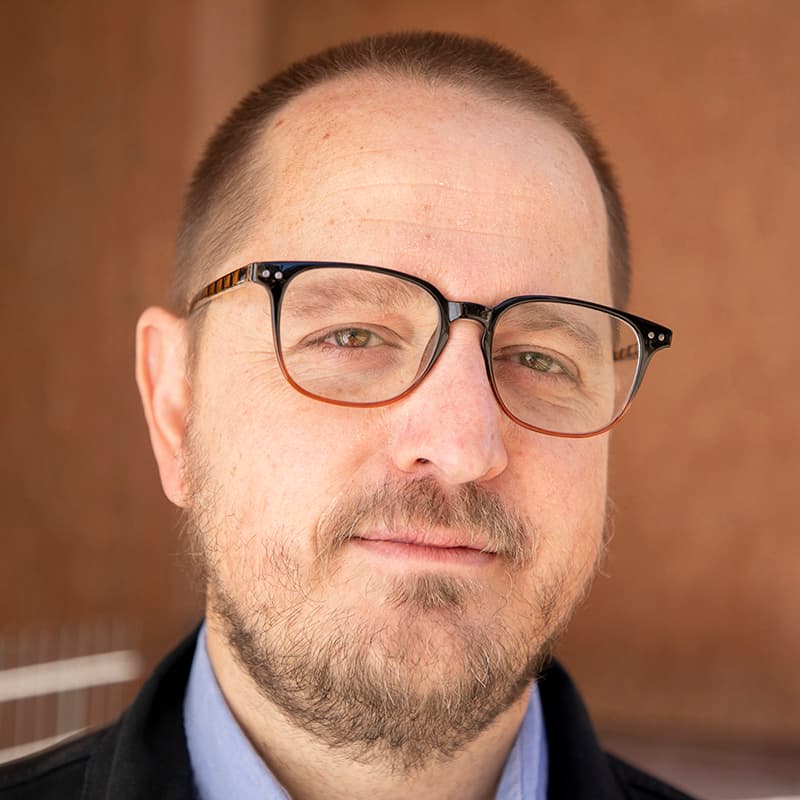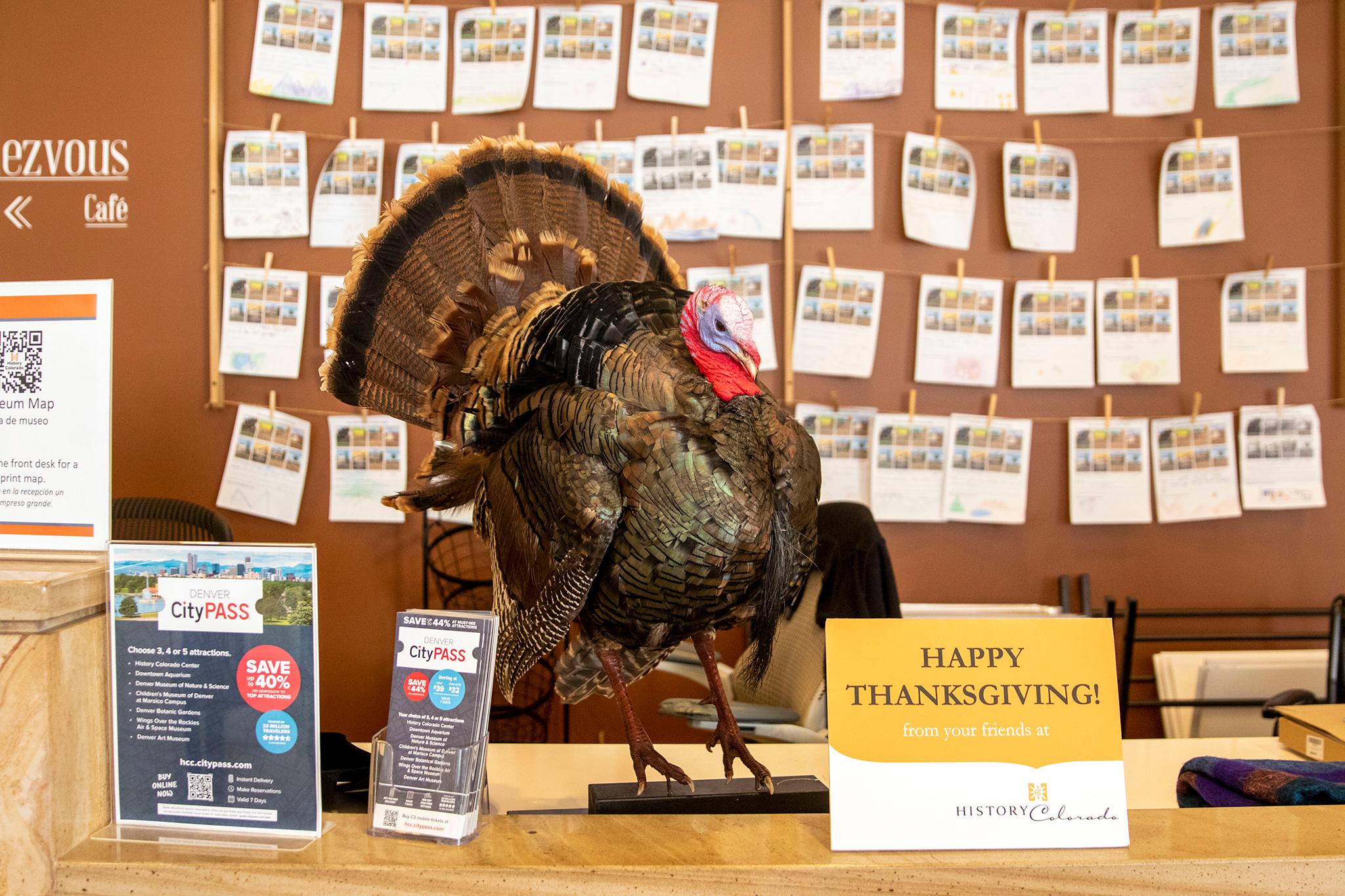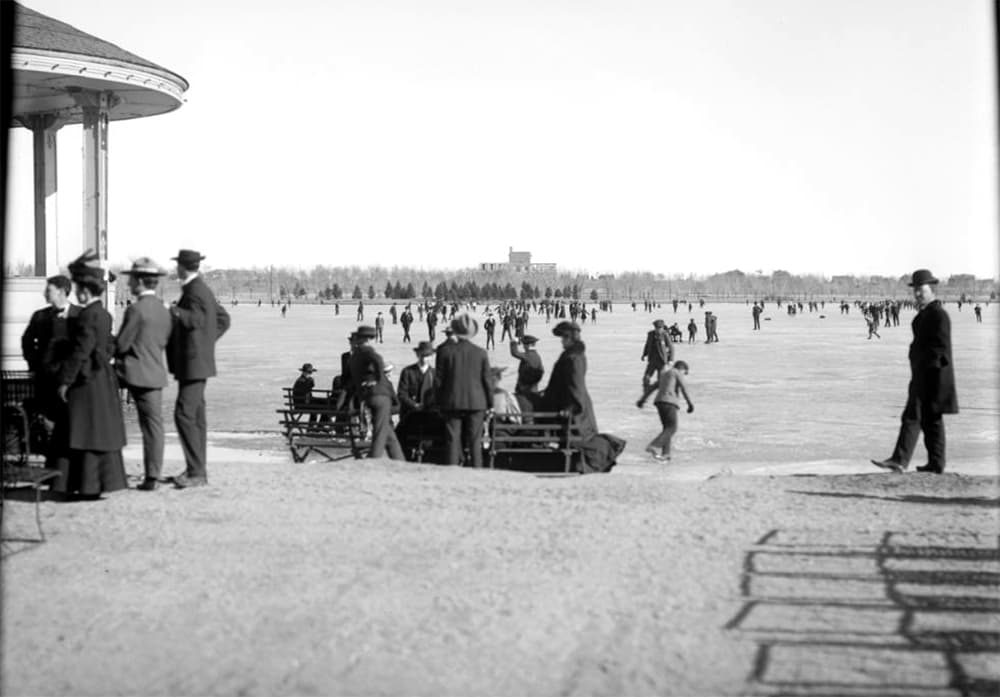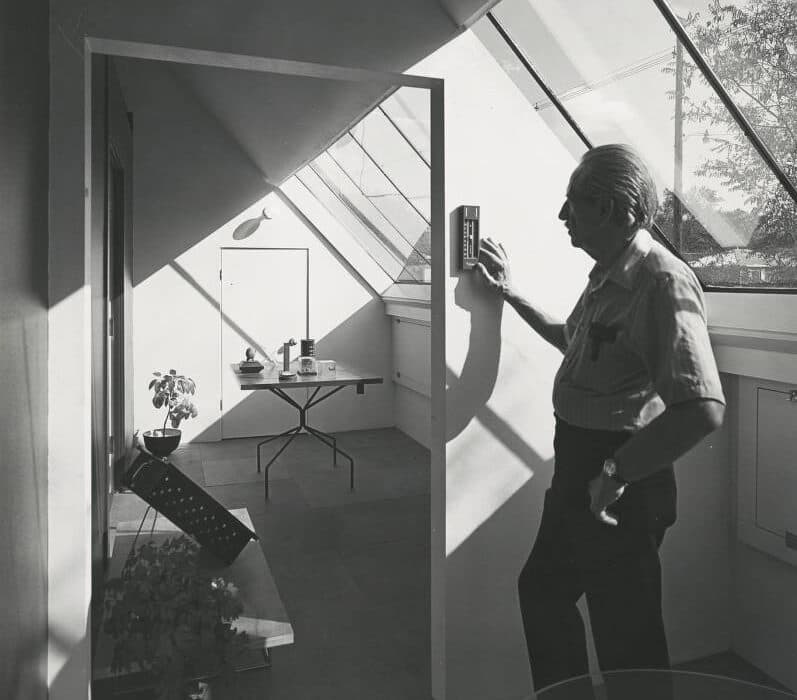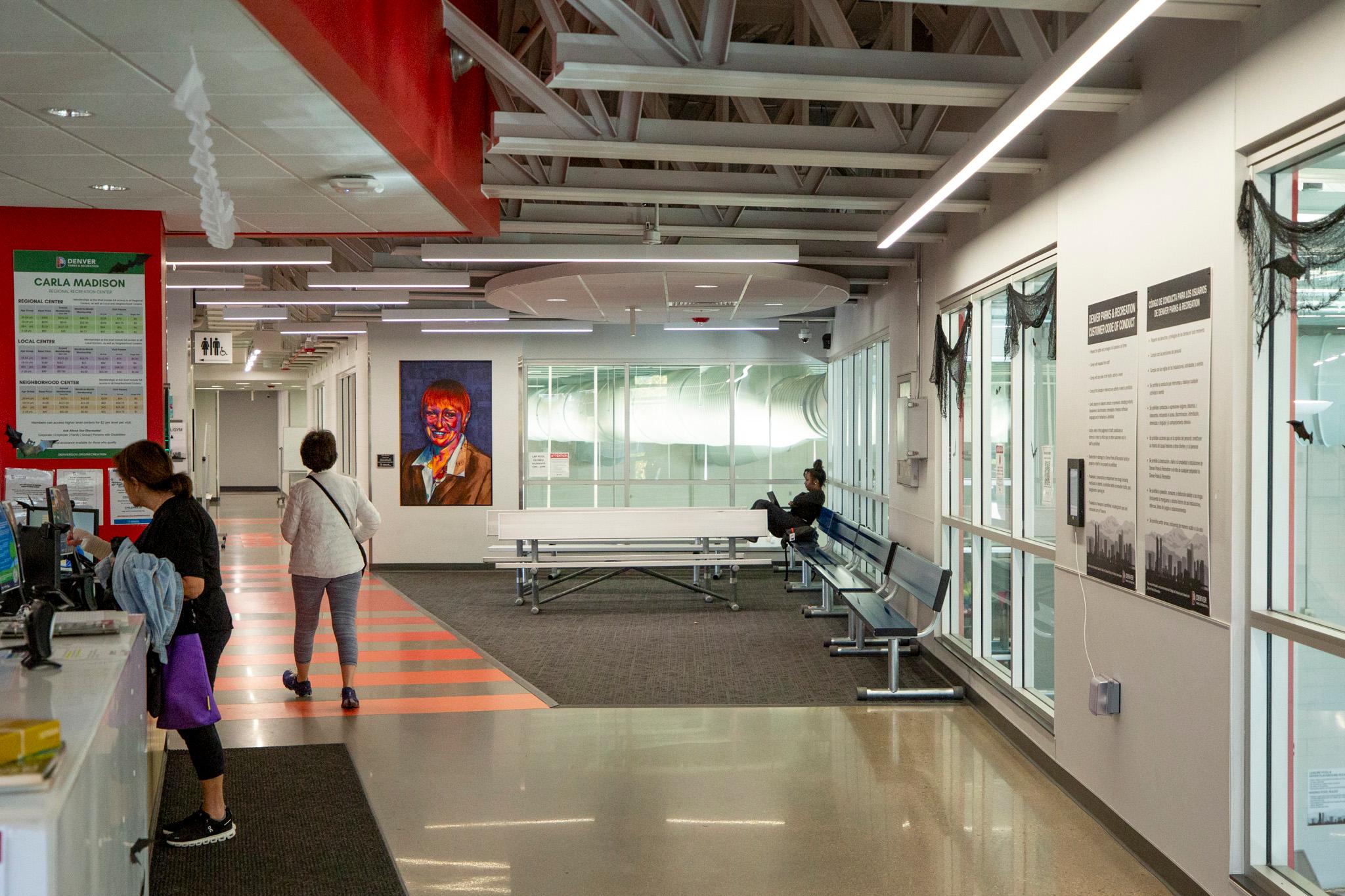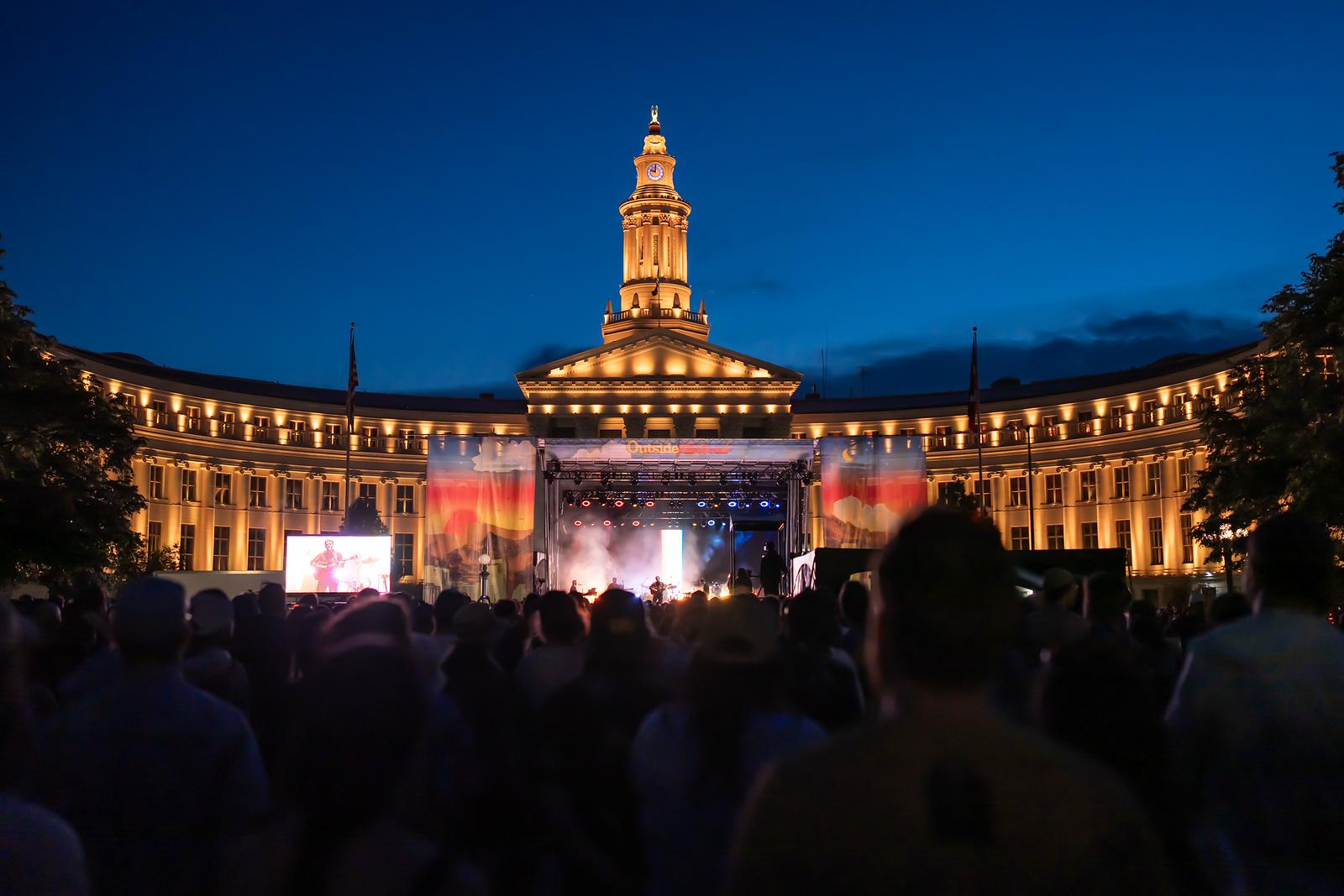Mayor Mike Johnston recently claimed without evidence that a Denver Police Department captain was shot by an “anti-migrant activist” who “came in to shoot up” one of the city-run migrant shelters in 2023.
“We have a captain on our watch right now who took three bullets in the back because he was defending a migrant shelter one night when an anti-migrant activist came in to shoot up that center,” Johnston told City Cast Denver last week. “And instead, he was there and took three bullets to save the lives of the people inside that facility.”
Johnston told the story as an example of the police department’s commitment to protect immigrants. But neither the mayor’s office nor the Denver Police Department found evidence that the actual event Johnston was referring to matched the most politically charged details in his telling.
There was only one incident the mayor could have been referring to, according to a DPD spokesperson.
In June 2023, 35-year-old Nicholas Lendrum shot DPD officer David Briggs outside a Quality Inn shelter for new immigrants. Briggs was providing security to the building when he was ambushed by Lendrum, who opened fire on him without provocation. Briggs then shot and killed Lendrum during a gunfight that lasted less than 30 seconds.
Briggs was shot several times and survived. He was — and is — a corporal in the force, which is a few ranks below captain.
But the larger question is about Johnston’s description of the attacker. Neither the Denver Police Department nor the mayor’s office could provide any evidence that Lendrum was an “anti-migrant activist” who intended to “shoot up” the shelter.
The mayor’s office acknowledged Monday that there was never any evidence that demonstrated either of those points, but reiterated that Briggs risked his life to guard immigrants.
“Corporal David Briggs’ actions exemplify the best of Denver and are a reminder of the courage and strength our city has shown in the most difficult of times,” mayoral spokesperson Jon Ewing wrote Denverite.
“The location of the shooting was well-known to be a shelter for migrants and Corporal Briggs would not have been there if not for our serious and well-founded concerns for the safety of the individuals staying inside.”
What do we know about what actually happened that day?
The shooting took place in the early morning of June 7. Johnston had just won the mayoral election, but he wouldn’t take office for another six weeks.
At 4 a.m. that morning, Cpl. Briggs was parked in his marked police SUV on security duty outside the Quality Inn shelter at 2601 Zuni St., where hundreds of immigrants were staying at the time.
He had worked the post before and parked near the lobby in case he was needed inside, according to then district attorney Beth McCann’s investigation of the shooting that night.
“Corporal Briggs noticed Lendrum walk by the front of his vehicle and enter the Inn at 4:10 a.m.,” McCann wrote. “Inside the Inn, Lendrum approached the front desk clerk and inquired about the price of a room. After a short discussion, Lendrum left and walked out of the Inn.”
Then Lendrum looked at the police SUV. Briggs thought the man was walking toward him to ask a question, but almost immediately, Lendrum pulled a handgun from his jacket pocket, extended his arm and began firing.
Three bullets slammed into Briggs’ bulletproof vest — two on his back, one on his ribs. Though they did not enter his body, they caused painful wounds. He felt blood trickling down his back.
Briggs got out of the SUV and rushed behind the vehicle. As Lendrum continued to fire, he backed away. Briggs returned fire over the roof of the SUV. Lendrum had fired all 18 rounds from his gun, collapsed, got up and continued to move.
“Shots fired,” Briggs said into his radio. “I’m hit. Shots fired. I’m hit.”
The corporal continued shooting. Lendrum collapsed in the grass on the other side of Zuni Street.
Weakening, Briggs braced himself against the wall and called for an ambulance.
When help arrived, Lendrum was unresponsive. Police found two handguns near his body — the Glock he had fired at the officer and a loaded .38 revolver.
The entire shootout lasted 27 seconds. No motive was established.
“Nobody’s been able to give us a reason for him ambushing the officer that day,” said DPD Commander Matt Clark at the time, according to a Denver7 report.
Johnston was defending the police department’s license-plate surveillance program.
When City Cast producer Olivia Jewell Love raised concerns that the city’s Flock Safety cameras could be used in federal immigration enforcement, Johnston defended his record protecting and supporting immigrants. He used the story of the 2023 shooting to make the case that nobody “has been more staunch in their defense of migrants than the Denver Police Department.”
Briggs was indeed shot in the line of duty while protecting an immigrant shelter.
Johnston’s office now acknowledges there is no evidence to suggest that Lendrum was an “anti-migrant activist” planning a mass shooting — an act that would have surely made national news had it happened.
Johnston visited Briggs in the hospital after the shooting; the mayor recalled someone telling him the shooter was an “anti-migrant activist” planning to shoot up the shelter, according to the mayor’s office. But that hasn’t been borne out in any publicly available evidence.
"We checked with investigators and it appears that the investigation never revealed a clear motive for the shooting," a Denver police spokesperson said via email.
This is the second time Johnston has apparently misstated facts about a criminal investigation while debating Flock.
Previously, he told 9News police used the Flock cameras to solve the death of Jax Gratton, a hairstylist.
"We had a trans woman who was kidnapped and murdered, picked up in Denver, murdered in Lakewood,” Johnston said in the interview. “We solved that crime because Denver and Lakewood could talk to each other across a Flock camera database.”
Though the cameras were used to narrow down suspects, the crime remains unsolved, and the statement angered Gratton’s mother, Cherilynne Gratton-Camis.
“Flock cameras had nothing to do with finding the perpetrators, absolutely nothing,” Gratton-Camis told 9News.
Johnston later acknowledged he misspoke.
